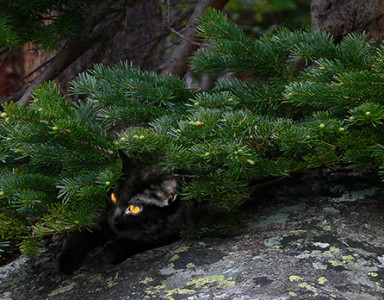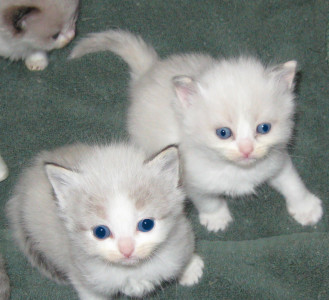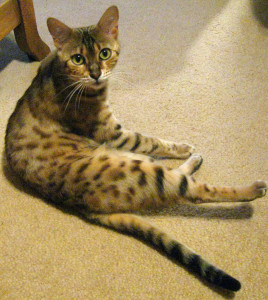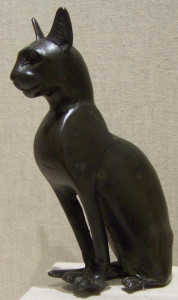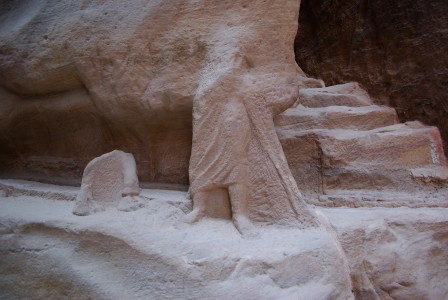What are Egyptian Mau cats? I guess there are a good many people out there who know as little about the Mau as I did before I did a little digging, so I’ll offer a brief history (apart from the fact that these are the cats from whom Mari is descended).
![]()
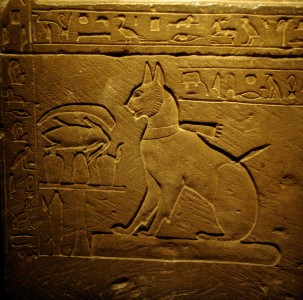
“Mau” is the Middle Egyptian word miw for “cat,” or “one who mews” (coming into use somewhere in the period from 2000 – 1300 BCE)–a great example of onomatopoeia in human language development. At the left is the hieroglyph “miw,” according to Alan Henderson Gardiner’s sign list. The Egyptian Mau appears in numerous papyri, tomb paintings, and carvings from about 2000 BCE onward, including the sarcophagus of Prince Thutmose’s cat (right). Thutmose was Akhenaten’s elder brother, who died before ascending the throne.

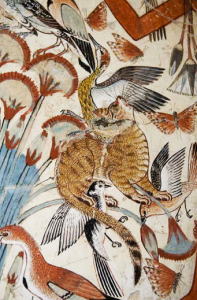

Most scholars agree that the Mau is descended from the African wildcat common to north Africa (felis sylvestris lybica) and the Egyptian jungle cat (felis chaus nilotica). But these wildcats as we know them are not spotted like the Egyptian Mau. It’s hard to say when the early Egyptian Mau replaced its body stripes with spots. As late as 1350 BCE, the Tomb of Nebamun depicted a striped tabby cat helping Nebamun hunt birds. But we do know from the evidence of thousands of cat mummies that today’s spotted Mau were common before the Common Era.
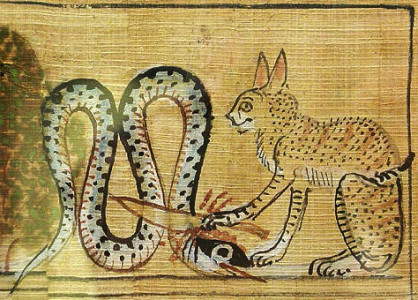
Somewhere around 1500 BCE the sun god Ra took on the characteristics of a spotted male cat and, according to the myths of the time, journeyed to the underworld every night, where he killed the snake demon Apophis, who nightly tried to prevent the sun’s rising.
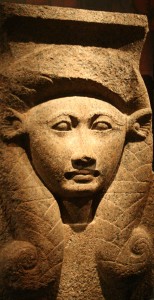

Bast was a cat/lion goddess who served as protector and defender of the Pharaoh and later of the sun god Ra in the 3rd and 2nd millennia BCE. She was eventually eclipsed by the goddess Sekhmet, also a warlike lion goddess. The changes in Bast’s significance, title, and even name were complex and confusing, all morphing as dynasties changed and regional beliefs merged over time. Near the beginning of the first millennium BCE she became known as Bastet, and was identified almost solely with the Egyptian domestic cat. She retained her protective role, influenced by the domestic cat’s skill in dealing with cobras and rodents, and also became associated with fertility and motherhood. Bubastis , or Pe-Bast, was established as the temple center of the cat goddess’s worship early in the 1st millenium BCE. The temple was famous for its beauty, although its significance declined after the Persian conquest of Egypt in 525 BCE. Worship of Bastet was finally outlawed in 390 CE, after Christianity became the official religion of the Roman Empire.
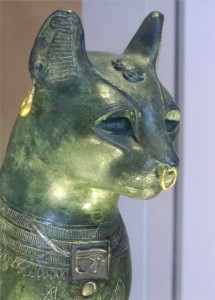
During its most active years, the temple at Bubastis was renowned throughout the ancient world for the ecstatic revelry of its festivals, it oracle, and its innumerable domestic cats and cat mummies, many buried with grave goods for the afterlife (milk, mice, and other edibles). In fact, the Old Testament prophet Ezekiel (Ezek 30:17) mentions the city of Bubastis, and by implication its temple to Bastet with its famous revels, when he makes his prophecies concerning the downfall of Egypt.
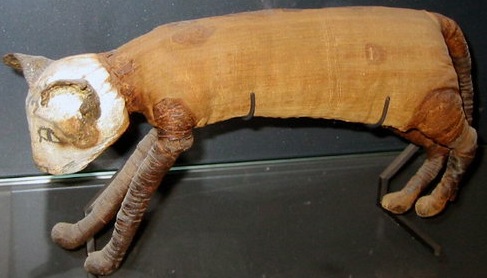

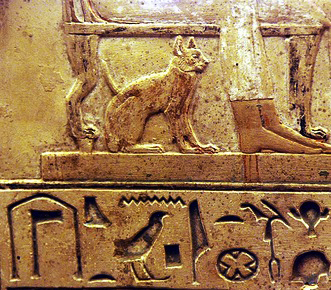
The reverence Egyptians felt for their cats is well documented. While cats themselves were not considered divine, they were sacred to the deities who adopted their appearance, and thus were due scrupulous respect and honor.
According to Herodotus (5th C BCE), families grieving for dead cats shaved their eyebrows as an expression of their grief. More curious is his description of the behavior of cats around fires. “When a fire occurs,” he said “the cats seem to be divinely possessed; for while the Egyptians stand at intervals and look after the cats, not taking any care to extinguish the fire, the cats slipping through or leaping over the men, jump into the fire; and when this happens, great mourning comes upon the Egyptians.” Perhaps Herodius was confused; surely cats can’t have changed that much in two thousand years.
Herodius’ account of a battle between Persians and Egyptians near Pelusium may be more accurate. According to Herodotus, the Persians had captured numerous cats before the battle and released them as battle was joined. Rather than risk harming the cats, the Egyptians surrendered. From their point of view, this was probably wise: unless you happened to be a servant of the goddess in the temple of Bastet, killing a cat was a crime punishable by death, not to mention whatever punishment the gods might inflict in the afterlife. Diodorus (1st C. BCE) describes a mob slaying a Roman soldier who accidentally killed a cat, in spite of the pharaoh’s pleas for mercy.
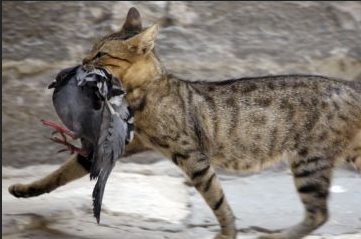
Sadly, in many of Egypt’s cities today, cats are considered pests, and are often abused, neglected and even slaughtered. The recent turmoil in Egypt has only aggravated their situation, adding many abandoned pets to the feral population, and killing uncounted animals in the streets. The Egyptian Society for Mercy to Animals (ESMA) continues to fight an uphill battle for their protection.
For the most part, Egypt’s cats have retained their distinctive appearance through the centuries. Many are identical to the cats of ancient history–and to the breed standards of the Egyptian Mau among cat fanciers. After all, “Egyptian Mau” literally means “Egyptian Cat.” DNA studies of cat mummies show very little difference between the ancient and modern Mau. Cats like the one above could easily be Ptolemaic statues come to life. Modern breeders have even traveled to Egypt to acquire likely cats to expand the genetic pool of the pedigreed Mau.
For an excellent all around presentation of the breed known today as Egyptian Mau, take a look at http://www.isiska.co.uk/ , the website of Isiska Egyptian Maus.
.
.


